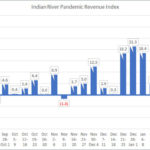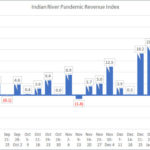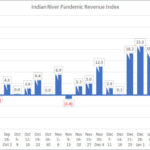Most distributors set up e-commerce storefronts for one simple reason: to take advantage of growth in online buying behavior in order to grow revenue. There’s a simple formula to follow when it comes to growing revenue through the eCommerce channel:
Sessions x Conversion Rate x Average Order Value = Revenue
That formula is pretty straightforward. Any increase to one metric, even if the other two remain flat, will lead to revenue growth. In a previous column, I discussed why sessions matter. Now, let’s look at conversion rate and how merchants can grow that by looking at other, smaller factors beyond purchases.
Purchases are certainly the most desirable type of conversion for an online storefront, and they are the type of conversions we’re referring to in the optimization formula above. There are certainly ways to improve purchasing conversions, like by providing abandoned cart alerts or an expedited checkout page.
But there are other kinds of conversions that may not necessarily translate directly into revenue, but do meet specific business objectives.
The Importance of Micro-Conversions
These micro-conversions include several smaller actions and events that take place on a site, but may not immediately result in sale. These include:
- Registering on the site to set up an account and place orders online
- Submitting a form to apply for credit, make inquiries or obtain a quote
- Downloading content or applications like product catalogs or installation guides
- Downloading your mobile e-commerce app
- Engaging in live, online chat for instant answers
- Registering for a training or certification course
- Following your company on social media via an onsite link to LinkedIn, Facebook or other social platform
- Calling your business using a direct link from the site
- Signing up for a loyalty rewards program
- Using specific functions like a new onsite tool or featured capability
Now, why are these actions important? For one thing, they are all forms of engagement with your brand and e-commerce operation, and any kind of engagement carries value. The path toward a sales conversion consists of four basic steps:
- Make people aware of your website, products, and services
- Build interest in your offerings
- Provide reasons to keep them interested; create a desire
- Have the visitor take the desired action
Micro-conversions all follow the same steps. In turn, they can also function as steps through which customers travel on the way to a sales conversion.
Following a company on social channels shows that potential customers are already aware of the e-commerce site, and potentially products and services that may be of interest to them. Using a new onsite tool or featured capability is a way to build interest and create that desire to buy a product.
Returning to our simple formula, any increase in conversion rate will lead to more revenue, without having to change sessions or average order value. Micro-conversions represent smaller actions that all contribute toward increasing purchase conversion rates. If you can increase the number of micro-conversions taking place on your site, then you can very likely increase the number of purchase conversions, growing the conversion rate.
The key to growing micro-conversions is through increased functionality of your e-commerce site. While the overall goal may be to make your SKUs available online, the sites that return the greatest revenue – and drive the most conversions – are not simply online catalogs.
They advise and help your existing and potential new customers. Live online chat helps questions get answered quickly and can possibly point customers to a product they weren’t aware you carried. Downloadable manuals and product information gives customers a reason to keep coming back, so it has the power to increase both sessions and conversion rate.
So, when trying to grow conversion rate, think of the other smaller micro-conversions that will entice customers to engage more with your e-commerce site. The more you can do on this front, the more likely you are to increase conversions, and as a result, revenue.
Scott Frymire is SVP of marketing at Unilog.
Related Posts
-
Indian River Consulting Group’s (IRCG) weekly Pandemic Revenue Index for the work week of Feb.…
-
Indian River Consulting Group’s (IRCG) weekly Pandemic Revenue Index for the work week of Feb.…
-
Indian River Consulting Group’s (IRCG) weekly Pandemic Revenue Index for the work week of Feb.…





